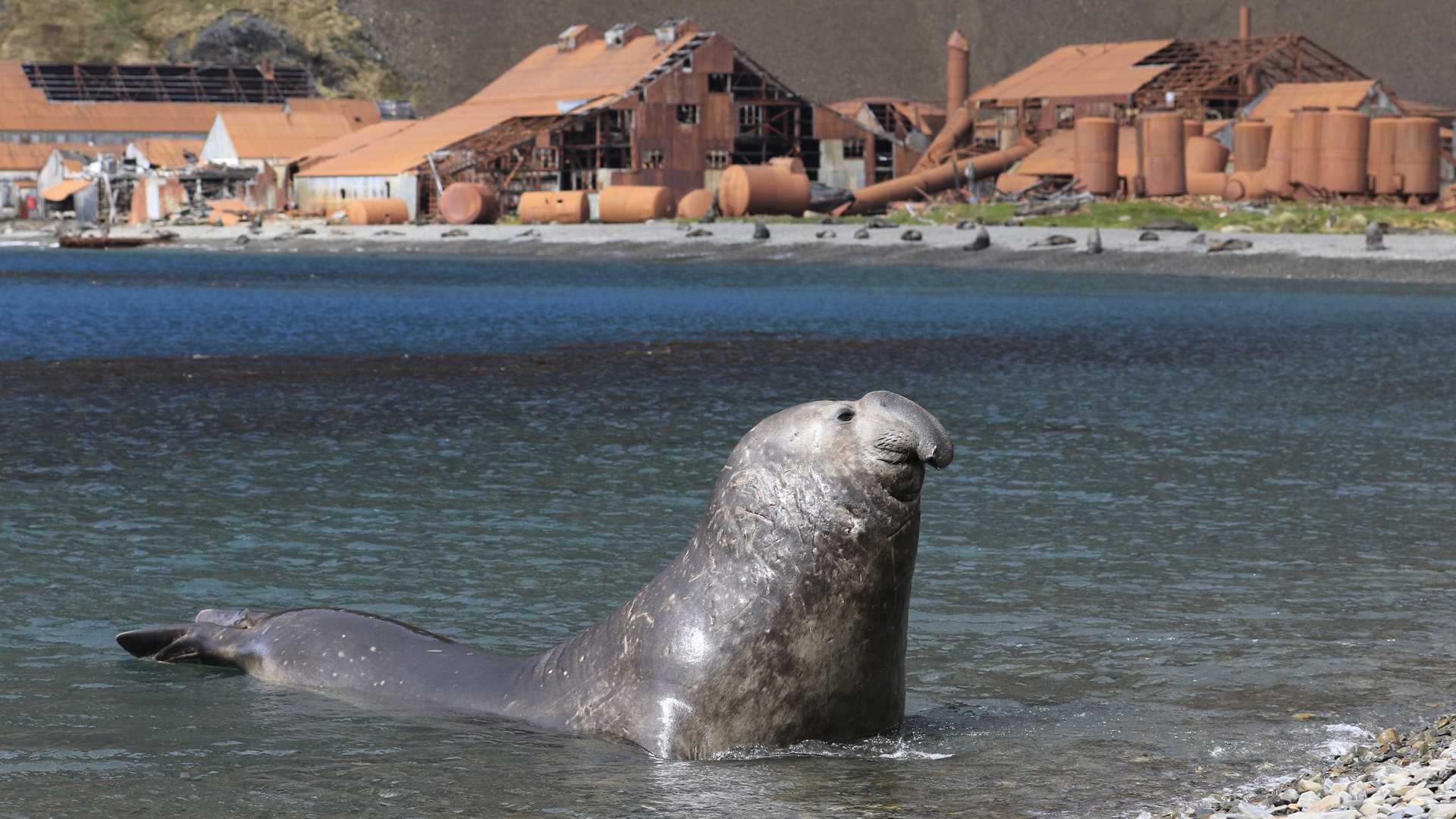This morning the National Geographic Explorer heaved anchor from the shelter of Fortuna Bay and made its way to our first landing of the day at Stromness Bay. As the wind whipped around Cape Saunders we soon found some protection as the captain pulled the ship to shore and we explored the incredible surroundings of the Shackleton Valley and the historical site of the Stromness whaling station.
Whaling at Stromness started in 1907 with the floating factory Fridtjof Nansen II, which moored off the shore while whale catcher boats went out in search of their bounty. Dragging whales back to the floating factory, men would flense the animal alongside and then the blubber blankets would be hoisted to the deck for rendering. In 1912 the Falkland Islands Dependencies created regulations that required the entire whale carcass be processed, and this by and large was not possible on floating factory ships. Thus, in 1912 the Stromness whaling station was built and that year it produced as much whale oil from 442 whales as the floating factory had from 912 whales the season before—a testament to the utilization of not only blubber but also bone (30% of the oil), and meat. In the 1930s the world market prices for whale oil collapsed due to the ruthless efficiency of large factory ships and pelagic whaling. At that point Stromness met its demise as a whaling station and from 1931 to 1961 it served as a ship repair yard for whale catcher boats and other vessels.
The Shackleton Valley obviously had another story to tell as one of the greatest epics of all times came near to a close here at Stromness. Ernest Shackleton, Worsely, and Crean at the end of their rope and an 800-mile-long journey across the Southern Ocean (in essentially a rowboat) were finally saved after a 32-mile, 36-hour-long traverse of the island. Having passed through the area in 1914 they knew whalers were living at Stromness and that they were their only hope of saving themselves and their 22 shipmates left on Elephant Island. Walking in the footsteps of these amazing men as we hiked up the valley and seeing the waterfall area where they made their final descent was a powerful experience. Back on the beach we were greeted by the amazing cast of characters whom make this extreme environment their home: Southern elephant seals and their pups (aka weaners), Antarctic fur seals, and king penguins. Wow, what an incredible morning!
After lunch we landed at Grytviken which is where the whaling history of South Georgia was born. We started in the graveyard with a toast to “the boss” as Ernest Shackleton died in the bay in 1922 on a later expedition. From there we walked the shoreline into the old whaling station where some of the old boats and buildings still remain. Exploring the site and the museum was an incredible opportunity to attempt to imagine what life must have been like for the 450 men (mostly Norwegian) who worked at this station. Harvesting the whales, until essentially there were none, in its lifespan (1904-1965) this one station alone harvested 54,000 of the 175,000 whales that were taken in total from all six stations around South Georgia. While totally gruesome in every respect, the history of this island has been focused around the extraction of fur seals, elephant seals, and whales and we have been both privileged and awed by our visits to the beaches and stations where the human history of this remote subantarctic island all began.







